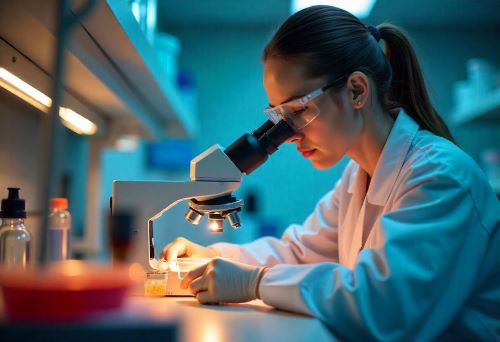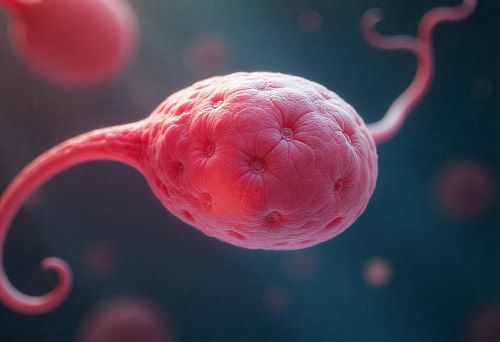ab-Grown
A revolutionary breakthrough in human reproduction is on the horizon. According to leading scientists, lab-grown sperm and eggs could become a reality within the next five to seven years, potentially transforming the future of fertility and family planning. This emerging science, known as in-vitro gametogenesis (IVG), is rapidly progressing in labs across Japan, the US, and Europe.

What Is In-vitro Gametogenesis (IVG)?
Turning skin or blood cells into viable sex cells
In-vitro gametogenesis is a process in which adult cells, such as those from the skin or blood, are genetically reprogrammed into stem cells. These stem cells can then be converted into sperm or egg cells through a sophisticated biological sequence inside lab-grown reproductive organoids.
Key process involved in IVG:
- Adult cells (skin/blood) → Induced pluripotent stem cells (iPSCs)
- iPSCs → Primordial germ cells (precursors of sperm/eggs)
- Germ cells grown in artificial testes or ovaries → Mature sex cells
Scientists Leading the IVG Revolution
Prof. Katsuhiko Hayashi of Osaka University: A Pioneer in the Field
Professor Katsuhiko Hayashi, a developmental geneticist at Osaka University, estimates that lab-grown human sperm may be just seven years away from becoming a viable reality. His lab has already produced mouse offspring from two biological fathers, an achievement that sets the stage for radical applications in human reproduction.
Other frontrunners in IVG research:
- Kyoto University, under Prof. Mitinori Saitou
- Conception Biosciences, a California-based startup backed by Sam Altman, CEO of OpenAI
Conception Biosciences: Backed by Silicon Valley for Fertility Innovation
Matt Krisiloff, CEO of Conception Biosciences, believes lab-grown eggs could be a game-changer in reversing population decline and extending female fertility well into older age. He told The Guardian that IVG “might be the best tool we have” for long-term demographic sustainability.
Potential Implications of Lab-Grown Sperm and Eggs
1. Revolutionizing Fertility for All
Lab-grown sperm and eggs could allow:
- Infertile couples to conceive using their own genetic material
- Older women to bear children beyond menopause
- Same-sex couples to have biologically related children
- Single parents to potentially produce children without a partner
2. Expanding Family Planning Possibilities
This technology could significantly extend the biological clock for women and help mitigate age-related fertility decline, a major issue in modern societies.

Ethical and Safety Concerns: Caution Ahead
Uncertainties Around Safety and Regulation
Although the science is advancing rapidly, experts warn that rigorous testing is essential before using lab-grown sperm or eggs in humans. There are concerns about:
- Genetic mutations
- Embryonic health
- Long-term generational impacts
“We really need to prove that this kind of technology is safe,” said Prof. Hayashi. “This is a big obligation.”
Regulatory Challenges in Countries Like the UK
Under current UK laws, using lab-grown gametes for reproduction is illegal. The Human Fertilisation and Embryology Authority (HFEA) is evaluating future regulatory frameworks to ensure ethical compliance and safety.
Key Advances Shared at ESHRE 2025 in Paris
During the European Society of Human Reproduction and Embryology (ESHRE) annual meeting in Paris, Prof. Hayashi shared his team’s latest findings:
- Creation of mouse spermatocytes inside a lab-grown testicle organoid
- Progress on developing human ovary organoids
- Advances in understanding egg dormancy—critical to egg maturation
However, mouse spermatocytes died before full maturation due to limited oxygen supply, a hurdle that researchers hope to overcome in the next phase.
Future of Human Reproduction: Radical Yet Possible
From Unibabies to Genetic Editing?
Experts are beginning to contemplate unconventional reproductive possibilities:
- Unibabies: Babies born from sperm and egg from a single individual
- Multiplex babies: Genetic contribution from more than two parents
- Gene editing: Altering stem cells to eliminate hereditary diseases
“Would anyone want to try these options?” asked Prof. Hank Greely, bioethics expert at Stanford University. “Some might.”
Krisiloff emphasized the need for strong regulations but acknowledged that disease prevention through embryo screening or genetic tweaks could become part of future reproductive practices.
What the Experts Are Saying
- Prof. Rod Mitchell, University of Edinburgh: “We could see eggs or sperm from immature cells in 5-10 years.”
- Prof. Allan Pacey, University of Manchester: “Someone will crack it. Whether society is ready, I don’t know.”
- Matt Krisiloff, Conception Biosciences: “This technology could be in clinics within five years.”

Conclusion: A Technological Milestone with Social Ramifications
The rapid development of lab-grown sperm and eggs could usher in a new era of assisted reproduction, with the potential to redefine parenthood, fertility, and genetics. But with these advancements come ethical dilemmas, legal barriers, and the critical need for global consensus on safety and societal implications.
As the world watches the progress of IVG, one thing is clear: the line between science fiction and reality is getting blurrier by the day.





